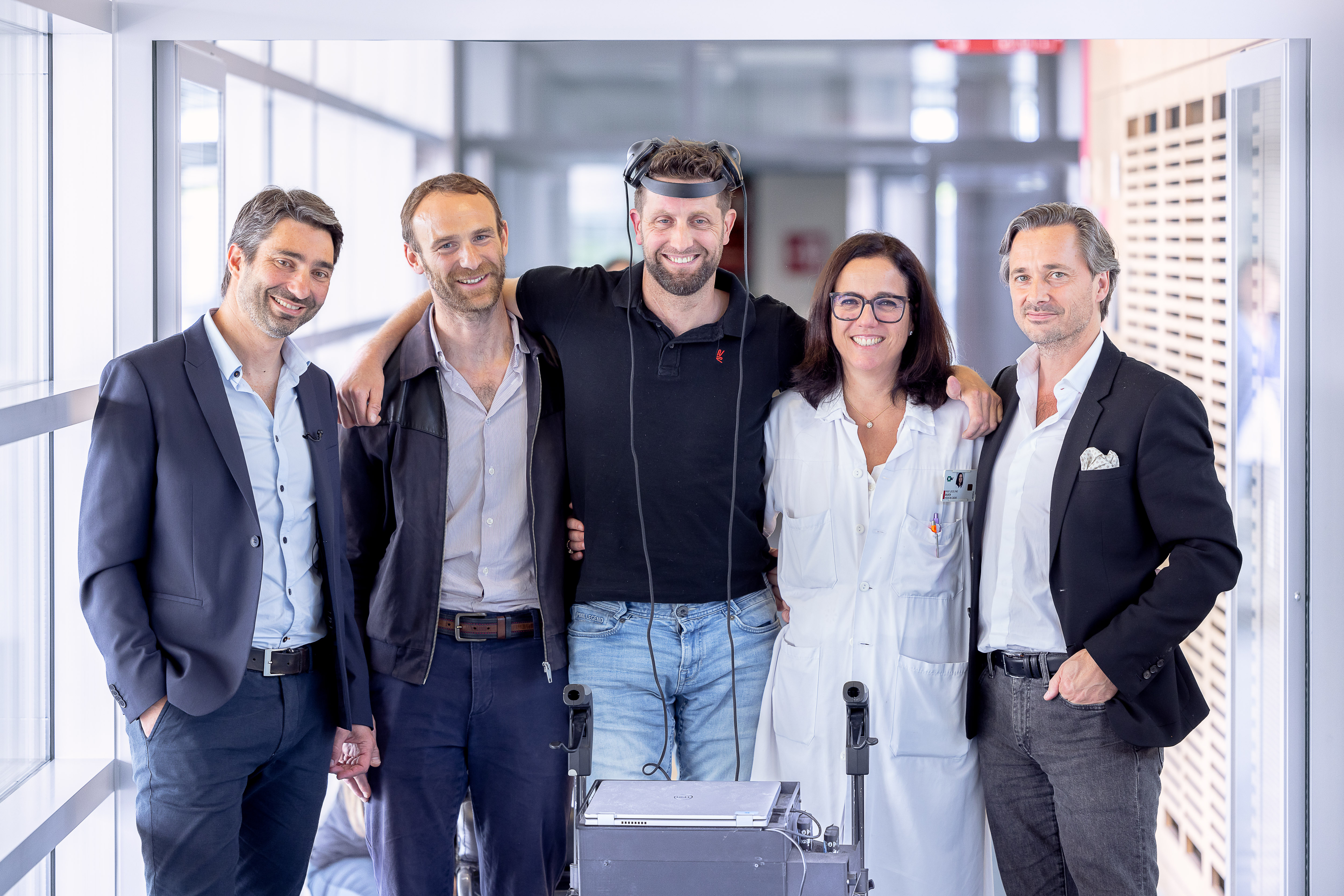A paralyzed man is walking again thanks to a “digital bridge” researchers created between his brain and a spinal stimulator.
“For 12 years I’ve been trying to get back my feet,” the 40-year-old Dutch man, Gert-Jan Oskam, told reporters on May 23. “Now I have learned how to walk normal, natural.”
The patient: Oskam was living in China in 2011 when he sustained a spinal cord injury that left his legs paralyzed. About five years later, he had a spinal stimulator implanted below the site of his injury as part of a clinical trial in Switzerland.

By lifting the heel of his foot, he could trigger that device to stimulate his spine in a way that allowed him to walk with the help of a walker. He was never able to go up or down steps, though, and even on flat surfaces, the experience felt unnatural.
“I felt like with every step a bit stressed, like I had to be in time with the rhythm, otherwise I wouldn’t make a good step,” said Oskam.
What’s new? Eager to improve his situation, Oskam enrolled in another clinical trial, involving the same research team, in 2021.
This time, doctors implanted two electrodes over the parts of his brain that control leg movement. They then worked with Oskam to train an algorithm to translate his thoughts about walking into a pattern of stimulation that, when delivered to his spine, would move his legs.
“The stimulation before was controlling me, and now I’m controlling the stimulation.”
Gert-Jan Oskam
Now, when he thinks about walking, the brain implants transmit the signals wirelessly to receivers in a helmet. From there, the signals are sent to a computer that Oskam carries around in a backpack.
The trained algorithm then processes the signals in real-time and sends commands wirelessly to the implanted spinal stimulator, allowing Oskam to stand, walk, and climb stairs in a way that feels natural.
“The stimulation before was controlling me, and now I’m controlling the stimulation,” said Oskam.
Getting better: The digital bridge appears to be doing more than just helping Oskam walk — it also appears to be rehabilitating him.
Oskam’s motor skills are now better than they were before the study, even when the device is turned off. This suggests that the brain implants and spinal stimulator are strengthening the remaining connections between his brain and spine.
“What these technologies do is maximize existing hardware, basically, in the nervous system,” neurologist Marco Capogrosso, who wasn’t involved in the study, told NBC News. “What happens, we believe, is that by reactivating these pathways, they strengthen them.”

The caveats: Brain implantation surgeries are invasive and risky, and today’s implants tend to become less effective over time, due to the formation of scar tissue. That means Oskam’s system could become less effective in the future.
This is also just one patient’s experience, and whether the digital bridge would work as well — or at all — in others like Oskam or people with more severe spinal cord injuries is still unknown.
“[This] isn’t taking someone completely paralyzed from lying in bed and not moving to up and walking,” physical therapist Megan Gill, who wasn’t involved in the study, told NBC News. “This person had some ability to stand. They had some ability to walk even before this technology was implanted.”
“This is our true objective: to make this technology available across the world for all the patients who need it.”
Grégoire Courtine
Looking up: Spinal cord specialist Grégoire Courtine, who helped lead the research, is optimistic, saying he sees “no reason” the device wouldn’t work for the majority of people with spinal cord injuries.
His team also think it could help people experiencing paralysis for other reasons, such as strokes, and might be able to reverse hand or arm paralysis, too. To find out, they’re now working to develop a commercial version through the company ONWARD Medical.
“This is our true objective: to make this technology available across the world for all the patients who need it,” said Courtine.
We’d love to hear from you! If you have a comment about this article or if you have a tip for a future Freethink story, please email us at [email protected].





